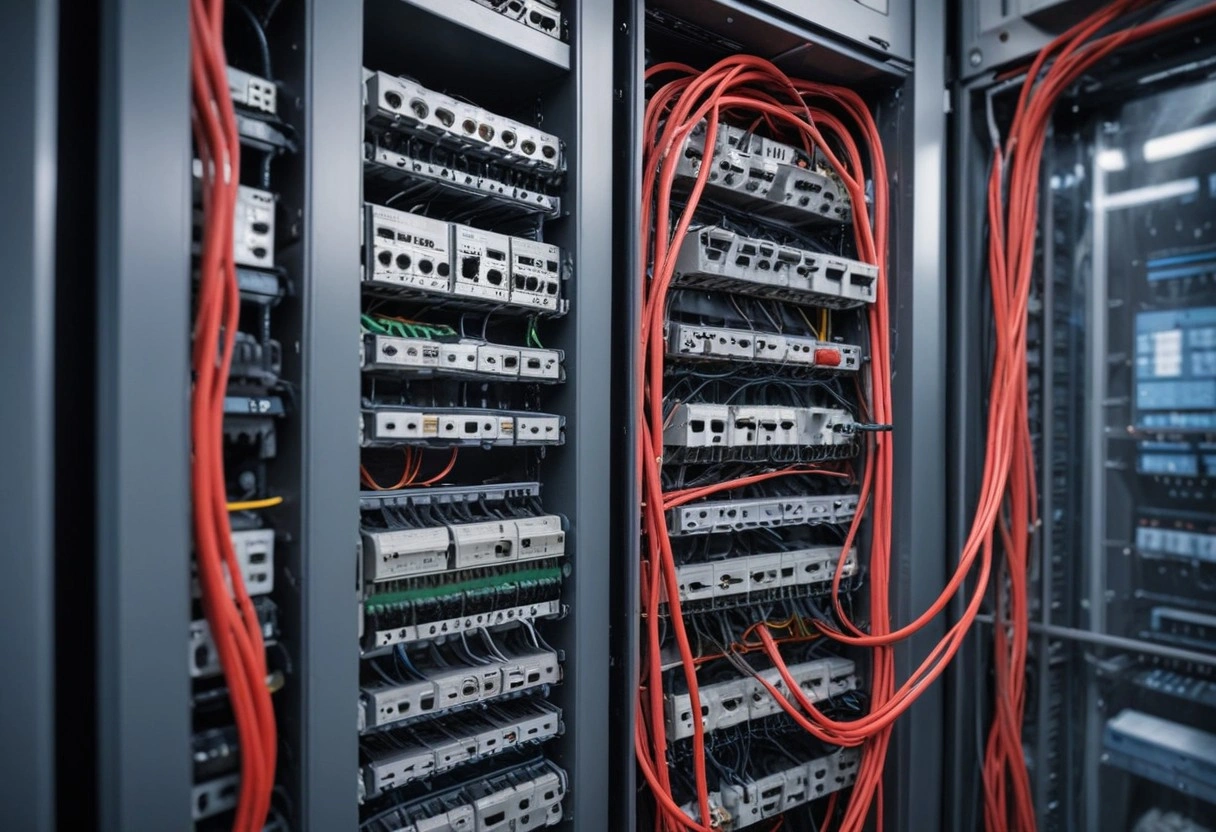What is Low Voltage Wiring: Understanding Its Importance and Applications
In today’s technologically advanced world, the wiring infrastructure of buildings plays a crucial role in ensuring the functionality
Created by: Daniel Ogunsemowo /
Vetted by:
Otse Amorighoye

In today’s technologically advanced world, the wiring infrastructure of buildings plays a crucial role in ensuring the functionality and efficiency of various systems. Among these, low voltage wiring is pivotal, yet often overlooked. This article will explore what low voltage wiring is, its key applications, benefits, and essential considerations for installation and maintenance, offering a comprehensive guide that aligns with Google's helpful content guidelines. Low voltage wiring refers to electrical networks that carry voltages of less than 50 volts, usually in telecommunications, security, and data networks. Unlike standard electrical wiring, which powers large appliances and lighting fixtures, low voltage wiring is typically used for smaller, more sensitive applications. To delve deeper into the significance of low voltage wiring, you can explore more here. Commonly used for telephone and network connections. For a comprehensive guide on the installation process, see Installation Process for Voice and Telephone Wiring. Often used for video, television, and broadband internet connections. Used for high-speed data transmission over long distances with minimal loss. Learn about the advantages of using fiber optic cabling here. Used to connect devices within a local area network (LAN). For tips on managing Ethernet cables, check Ethernet Cable Management Tips. Low voltage systems are integral to the modern infrastructure of homes and businesses. Here are some primary applications: Includes telephone lines and other communication systems. Involves data transmission, internet connections, and intra-building networking. Understanding different types of network cables can be crucial, and you can find more information here. Encompasses CCTV, alarm systems, and access control systems. For home theaters, intercom systems, and conferencing equipment. Controls lighting, HVAC (heating, ventilation, and air conditioning), and other automated home systems. Low voltage systems are safer to install and maintain due to their lower risk of electrocution and fire, making them ideal for residential and commercial applications. These systems consume less power, contributing to energy savings and reducing overall utility costs. Installation and maintenance costs for low voltage wiring are generally lower than those for high voltage systems, especially when considering the reduced need for heavy conduits and energy usage. Low voltage systems are highly adaptable to technological advancements, allowing easy integration with new technologies and scalability to accommodate growing needs. These systems enhance the capability of communication networks and increase the efficiency and reliability of security systems. Proper planning is essential to ensure that the wiring meets current needs and allows for future expansion. This involves selecting the right types of cables and designing a layout that minimizes cable lengths and interference. Installation should comply with national and local codes, including the National Electrical Code (NEC), which provides guidelines for the safe and efficient installation of low voltage wiring. For more details on structured cabling systems, see Decoding What Is a Structured Cabling System: A Comprehensive Guide. Due to the complexities involved, professional installation is recommended to avoid common mistakes like improper grounding and poor connections that can affect system performance. Regular checks and maintenance are necessary to ensure that the wiring and connected systems remain in optimal condition and to prevent faults. Learn about preventive maintenance checklists here. Technology evolves rapidly; maintaining an up-to-date system often involves upgrades and repairs, which should be handled by professionals to ensure compatibility and performance. Effective cable management prevents damage and loss of functionality. It involves organizing cables and ensuring they are properly labeled and secured. With the increasing reliance on smart technology and automation, the role of low voltage wiring is becoming more critical. Innovations in wireless technology and the Internet of Things (IoT) are likely to expand its applications, requiring more sophisticated and integrated low voltage systems. Low voltage wiring is a foundational component of modern technological infrastructure, offering versatility, safety, and cost-effectiveness. Whether for simple communications or complex security systems, understanding and implementing effective low voltage solutions is essential for optimizing functionality and preparedness for future advancements. Low voltage wiring refers to electrical networks that carry voltages of less than 50 volts, used primarily in telecommunications, security, and data networks. Low voltage wiring carries less risk of electrocution and fire, making it safer to install and maintain in residential and commercial applications. Common applications include telecommunications, networking, security systems, audio and video systems, and home automation. Regular inspections are recommended to ensure optimal condition and to prevent faults. The frequency can depend on the specific application and usage. For details on maintaining network cables, see Maintenance and Troubleshooting of Data Network Cables. Yes, low voltage systems are flexible and scalable, allowing for easy integration with new technologies and upgrades to accommodate growing needs.Comprehensive Guide to Low Voltage Wiring
Understanding Low Voltage Wiring
Definition and Basics
Types of Low Voltage Cables
Twisted Pair Cables
Coaxial Cables
Fiber Optic Cables
Ethernet Cables
Applications of Low Voltage Wiring
Telecommunications
Networking
Security Systems
Audio and Video Systems
Home Automation
Benefits of Low Voltage Wiring
Safety
Energy Efficiency
Cost-Effectiveness
Flexibility and Scalability
Improved Communication and Security
Installation Considerations
Planning and Design
Compliance with Standards
Professional Installation
Maintenance of Low Voltage Systems
Regular Inspections
Upgrades and Repairs
Cable Management
Future of Low Voltage Wiring
Conclusion
FAQs
What is low voltage wiring?
Why is low voltage wiring safer than high voltage wiring?
What are some common applications of low voltage wiring?
How often should low voltage wiring systems be inspected?
Can low voltage systems be upgraded easily?